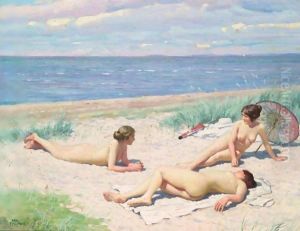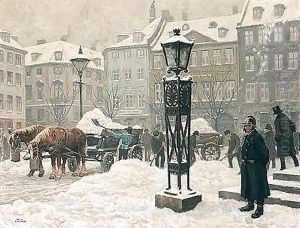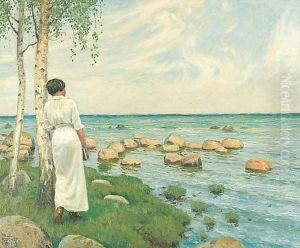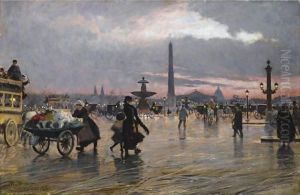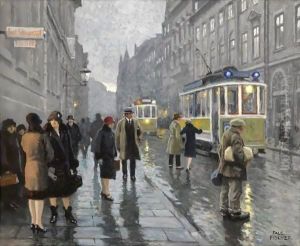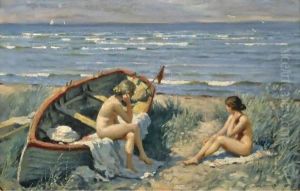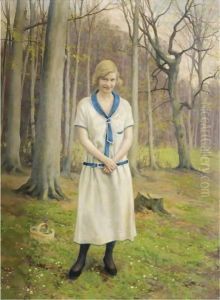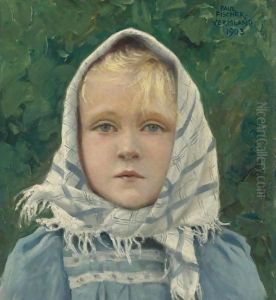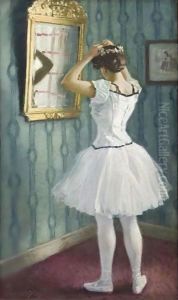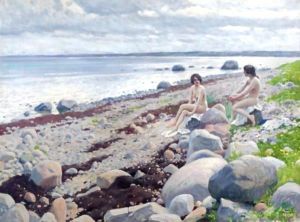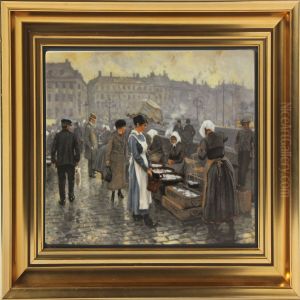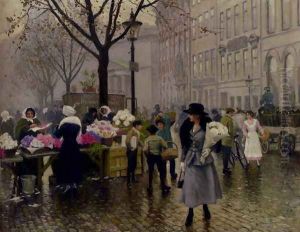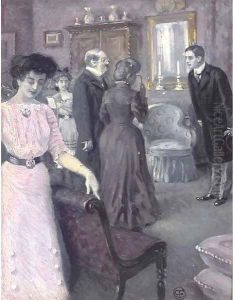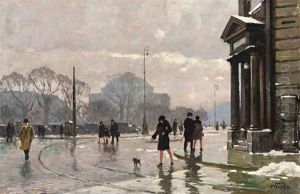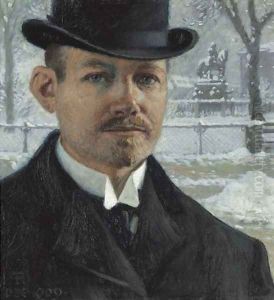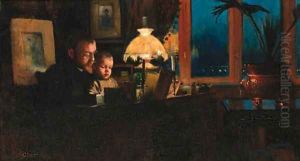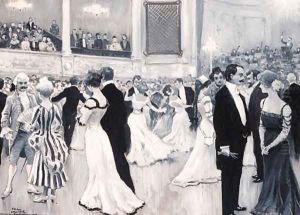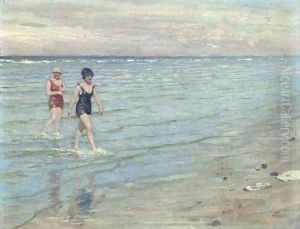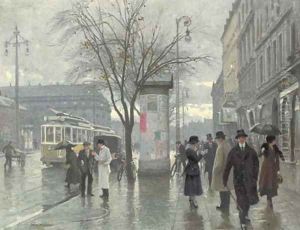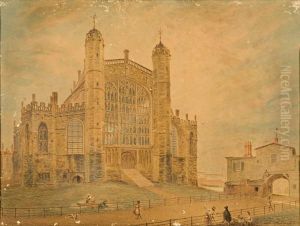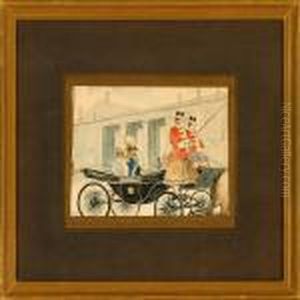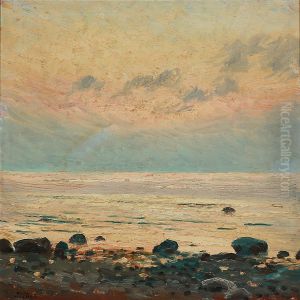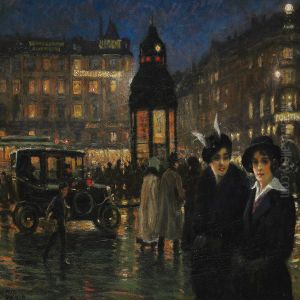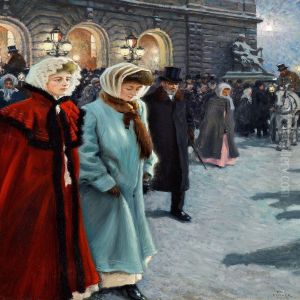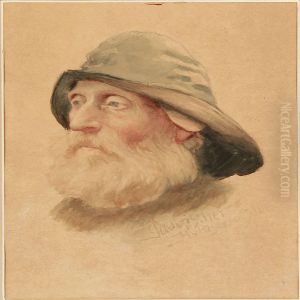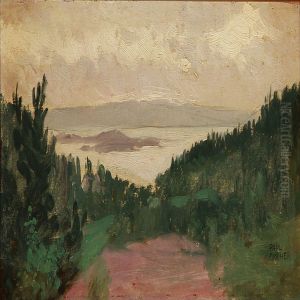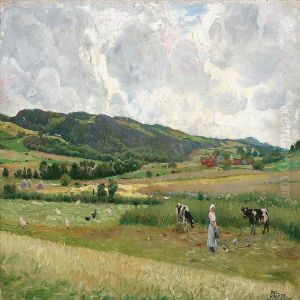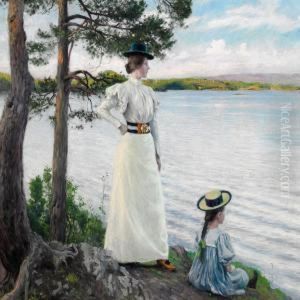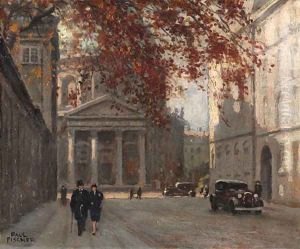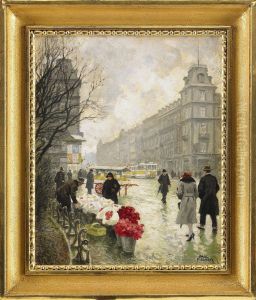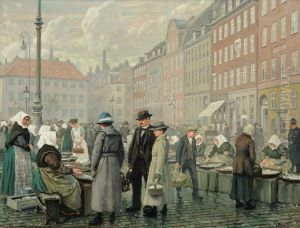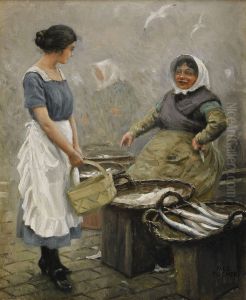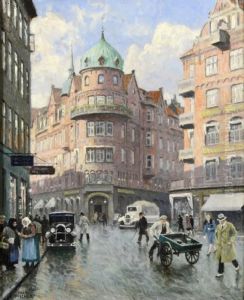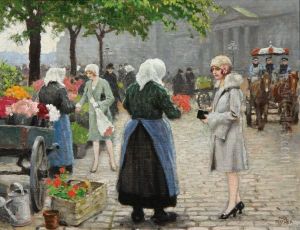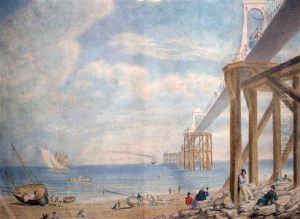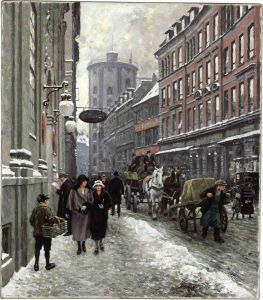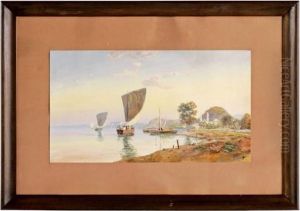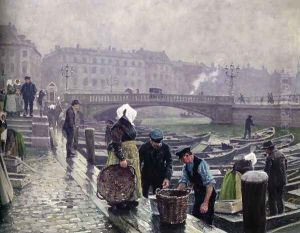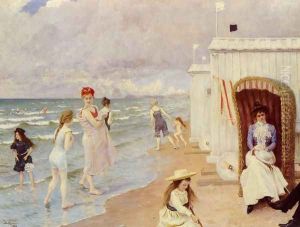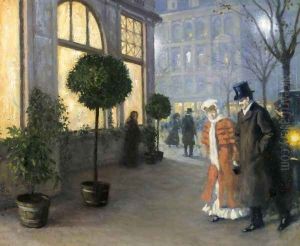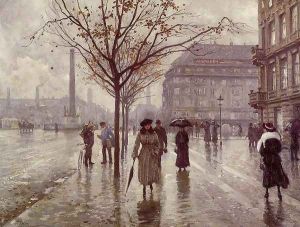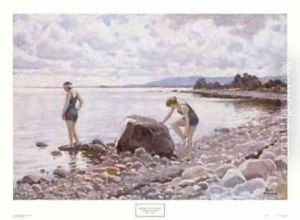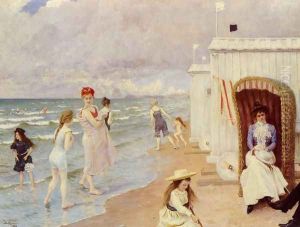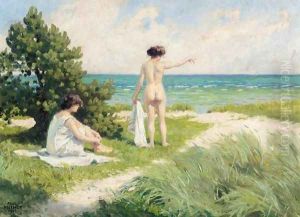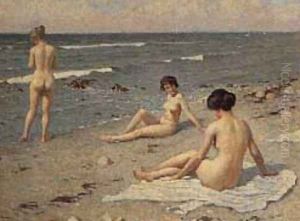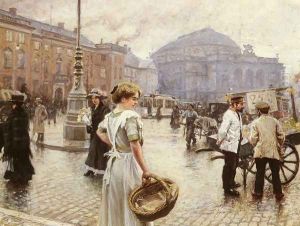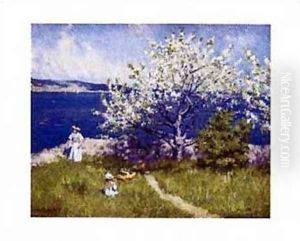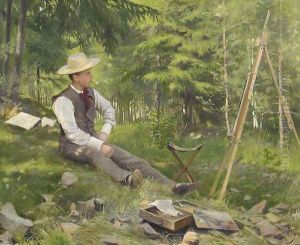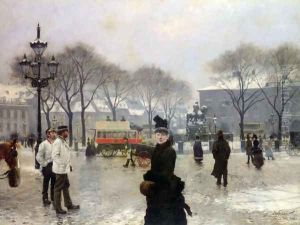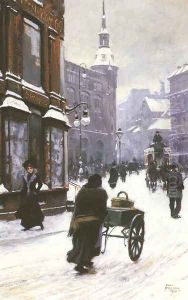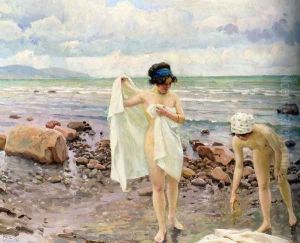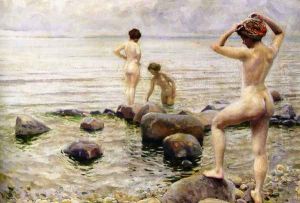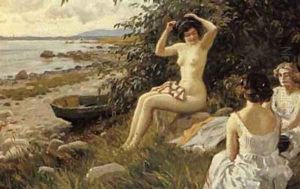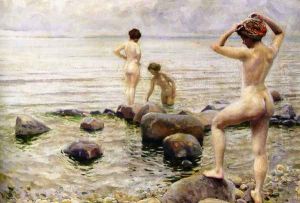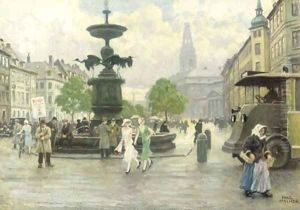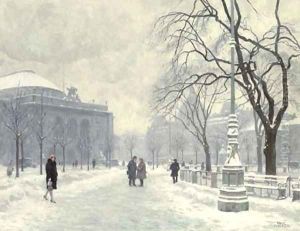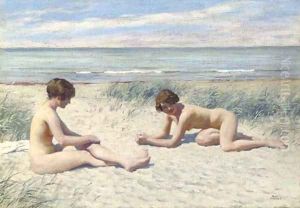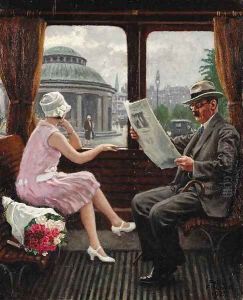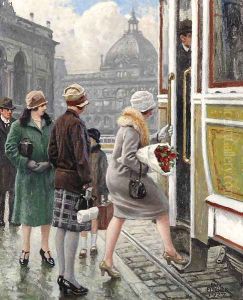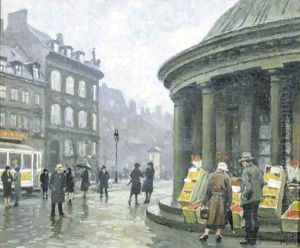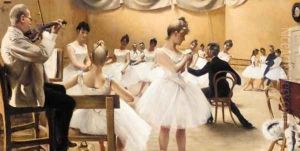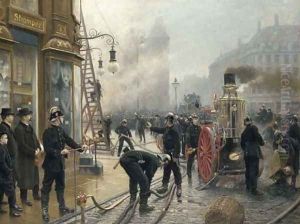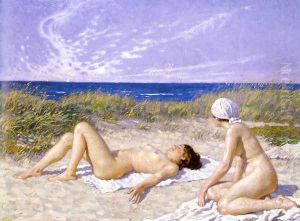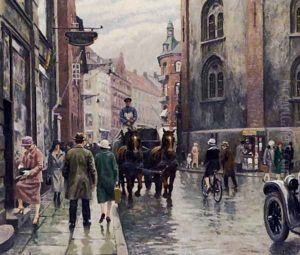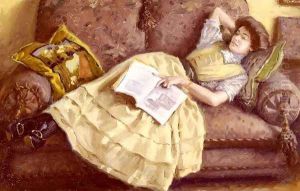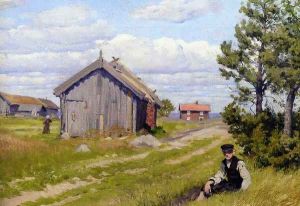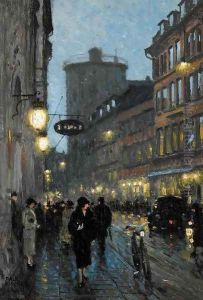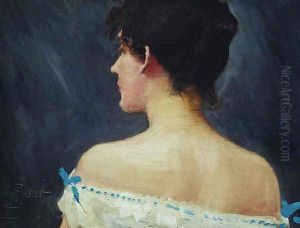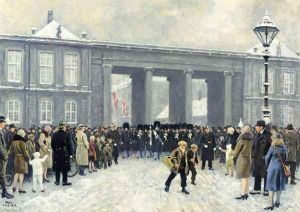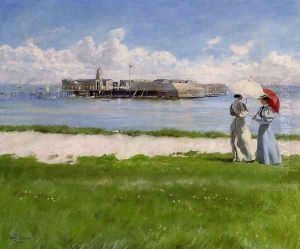Paul-Gustave Fischer Paintings
Paul-Gustave Fischer was a Danish painter born on July 22, 1860, in Copenhagen, Denmark. He was one of the preeminent Danish artists of the late 19th and early 20th centuries, known for his depictions of everyday life and the bustling streets of Copenhagen. Fischer was the son of a painter, Philip August Fischer, and he showed an early interest in art, following in his father's footsteps.
Fischer began his formal art education at the Royal Danish Academy of Fine Arts at a young age. He was influenced by the contemporary Danish painting scene, which included the Skagen Painters, a group of artists who gathered to paint the unique light and life at the northernmost part of Denmark. However, Fischer's work was distinct in its urban focus, especially his fascination with the dynamics of city life.
Throughout his career, Fischer traveled extensively, which broadened his perspective and enriched his palette. His travels took him across Europe, where he studied the works of the Impressionists, whose influence can be seen in his lighter brushwork and attention to the effects of light. Despite these influences, Fischer maintained a distinctive style that combined realism with a sense of romanticism.
Fischer's works encompassed a variety of subjects, including genre scenes, landscapes, portraits, and nudes. He had a particular talent for capturing the atmosphere of the places he painted, whether it was a rainy street in Copenhagen or a sunny beach scene. His paintings often featured the daily activities of middle-class urbanites and are notable for their vibrant colors and lively depiction of light.
In Denmark, Fischer gained considerable acclaim during his lifetime and was awarded several honors. His art also found popularity outside of Denmark; his works were exhibited in places like the Glaspalast in Munich and the Salon in Paris.
Towards the latter part of his life, Fischer continued to paint and exhibit his work, although he did not achieve the same level of success as he had in his earlier years. He passed away on May 1, 1934, leaving behind a rich legacy of Danish art. Today, Paul-Gustave Fischer's works are held in high regard and can be found in major museums and private collections, where they continue to be appreciated for their contribution to Danish national art.
